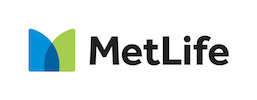New Report Highlights Gains in Financial Inclusion, Led by India; Digitisation on the Rise
The digitisation of financial services is key to increasing access to finance

As featured on www.eiu.com | The offical site of The Economist Intelligence Unit
The 2016 Global Microscope on Financial Inclusion shows that essential policies for bringing financial services to low-income groups are now widespread in the developing world. Nine of the 12 financial inclusion indicators covered in the benchmarking index improved globally in 2016, building on gains which have been made during the last decade. Even so, many countries have not moved significantly beyond basic policies, and greater focus is needed if financial inclusion is to play the critical role envisioned in the Sustainable Development Goals (SDGs).
The Global Microscope is produced by The Economist Intelligence Unit (The EIU), with policy guidance and financial support from leading organisations in the field (see notes). Now in its 10th year, the Microscope is the global standard for financial inclusion policy in developing economies.
Digitisation of financial services holds great promise for improving access to finance. Overall, for the indicator on electronic payments, the average of countries' scores rose by a total of 14 points, or by 32%, between 2014 and 2016. This suggests widespread, positive action to create a regulatory environment more conducive to digital economic activity. Governments are also doing more to embed digitisation by using it in their transfer payment programmes. The Microscope report highlights examples of such transfer payments in Brazil, Mexico, Mongolia and Uruguay.
Leo Abruzzese, Global Director of Public Policy at The EIU, said, “Financial inclusion is now firmly established on the global policy agenda and is widely regarded as a critical foundation in the improvement of livelihoods, earning it a key role in the SDGs. It is important, however, that governments, regulators, banks, non-bank financial institutions, telecom providers, and other stakeholders continue the momentum.”
He added, “There is much still to be done, particularly with regard to government support for financial inclusion, de-risking, and client protection. The availability of insurance for low-income populations remains a challenge, and stakeholders need to focus on better usage of financial accounts now that access is well underway. “
India has shown particularly dramatic advances in its financial inclusion insitutions and policies. It has, for example, set quantifiable goals for account opening for low-income families, with more than 200m accounts opened, assisted by a national biometric identification programme. The policy also emphasises access to credit, insurance and pension facilities, as well as channelling all government benefit payments into individuals’ bank accounts to increase usage. India also has targets to provide alternative sources of access through bank branches, bank correspondents, ATMs, and satellite branches in villages of 2,000 or more residents. In addition, the Reserve Bank of India (RBI, the central bank) is working to facilitate digital money transfers through the launch of the Unified Payment Interface (UPI), and has issued guidelines to strengthen financial literacy.
Consistent with last year’s overall performance, Latin America and the Caribbean (LAC) and East and South Asia tie for the highest average overall scores by region, with LAC countries capturing four of the global top ten spots by rank. This year’s Microscope celebrates steady progress in countries that have continued to increase their commitment to financial inclusion, such as in India, Costa Rica, Honduras and Egypt. These countries have made the biggest gains over the last three editions of the Microscope and have policies in place to continue this success.
The Global Microscope 2016 report and benchmarking model are available free of charge on The EIU’s website at: www.eiu.com/microscope2016
About the Microscope
The Microscope is produced by The Economist Intelligence Unit, with policy expertise and financial support from The Multilateral Investment Fund (MIF), a member of the Inter-American Development Bank (IDB) Group, the Center for Financial Inclusion at Accion and the MetLife Foundation. Technical support was provided by the Institute for International Finance (IIF) and the Islamic Research and Training Institute (IRTI), a member of the Islamic Development Bank Group (IDBG). First produced in 2006, the Microscope benchmarks national progress on the enabling environment for financial inclusion, with the goal of catalysing reform. The Microscope assesses the regulatory ecosystem for financial inclusion by evaluating 12 indicators across a range of developing economies in East and South Asia, Eastern Europe and Central Asia, Latin America and the Caribbean, Middle East and North Africa, and Sub-Saharan Africa. This year’s Microscope is the third edition that looks beyond microfinance, evaluating countries across the wider landscape of financial inclusion.
About The Economist Intelligence Unit
The Economist Intelligence Unit (The EIU) is the research and analysis division of The Economist Group. Trusted by the world’s most influential organisations, The EIU’s public policy practice provides evidence-based research for policy-makers and stakeholders seeking clear and measurable outcomes. More information can be found at http://www.eiu.com/publicpolicy or follow us on www.twitter.com/theeiu
About MetLife Foundation
MetLife Foundation was created in 1976 to continue MetLife’s long tradition of corporate contributions and community involvement. Since its founding through the end of 2015, MetLife Foundation has provided more than $700 million in grants and $70 million in program-related investments to organizations addressing issues that have a positive impact in their communities. Today, the Foundation is dedicated to advancing financial inclusion, committing $200 million to help build a secure future for individuals and communities around the world. To learn more about MetLife Foundation, visit www.metlife.org.

